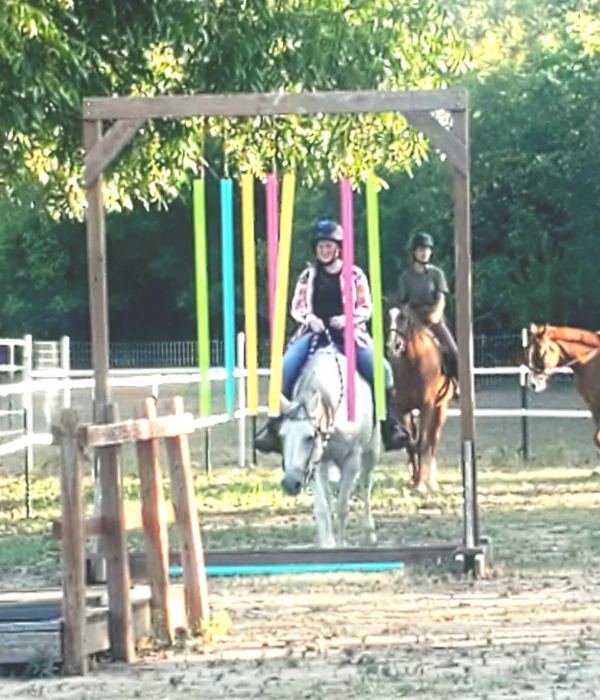

So you’re ready to start your first lesson. But, you have an important question to decide. What kind of horseback riding do you want to engage in? What you decide will infuence the clothing and equipment you purchase as well as be the deciding factor in your lesson program. Riding comes in many forms: therapeutic, competitive, and non-competitive. Riding also comes in two basic styles, Western and English. While the fundamental mechanics of horseback riding are the same, each style is a little bit different. And ultimately, which style you ride depends on what your riding goals are.
Western riding was traditionally used for working, ranching, and welfare traditions. The western saddle is the original working saddle. The saddle itself is large, and has a horn you can use for holding things, or holding onto it for balance. Western riding is also the kind of riding you will see at a rodeo.
Western riding requires a larger saddle to help you distribute your weight on the horse’s back. In general, it is considered better for ranching and working activities. There is less tack overall, which makes tacking up go faster. If you are thinking about the activities you’d like to do, western riding is usually better for barrel racing and trail rides. On experience level, Western riding is generally considered easier than English riding.
The larger saddles can be heavier and more difficult to swing onto the horse’s back. If you aren’t accustomed to it, it may be difficult while trotting as most western horses heads go low. In general, the saddles are larger, and can be difficult to sit right in, although the saddles are usually more comfortable than english saddles.
English riding originated in Europe, and is traditional for things like show jumping. The saddle itself is a smaller saddle. The half seat is closer to the horse’s back and allows the rider to communicate a bit more with the horse through their seat. In English riding, riders have a closer contact with their reins, using this to help guide the horse through what they would like to do. The english saddle was designed for fox hunting in the 18th century, when it was built, it needed to be comfortable to ride in, but sleek enough to make sure that the horse’s movements weren’t hindered.
When looking at the pros of english riding, the first thing I thought of is that the saddle is smaller, and lighter. This means that it can be easier to put on a horse’s back. English riding is traditional for some events, such as dressage, showjumping, racing, and eventing. When you ride English, you’ll notice that it uses a lot of concentration. This means that it can help you distract yourself from stress as all your concentration needs to be on the ride.
There’s always pros, and there’s always cons to any one given thing. With English riding, you’ll notice that when you are trotting, you must learn to post. This activity can be laborious and difficult. The way that the saddle is built, it may be more uncomfortable because of the flat seat. In English riding, there is more tack than the western style. This may mean that it takes longer for you to tack up your horse. It’s generally accepted that this style takes more work and more effort than western riding.
Western riding has a larger saddle and is generally more relaxed, western riders usually use a more relaxed rein and can hold their reins in one hand. This differs from English riders, who hold their reins in both hands, and tend to use a bit more of a connected rein than western riders. Another difference is what all one does in each style in competition. Western riders tend to do things like western dressage, western pleasure, barrel racing, and rodeo. English riders however do things like showjumping, dressage, eventing, showing, pleasure riding, and racing. If you were to try to showjump in a western saddle, you’d not get as far as you’d like to.
Still not sure? Schedule a Western ride with Moriah to get you started. You can always change your mind, but with Western, you need less initial equipment.